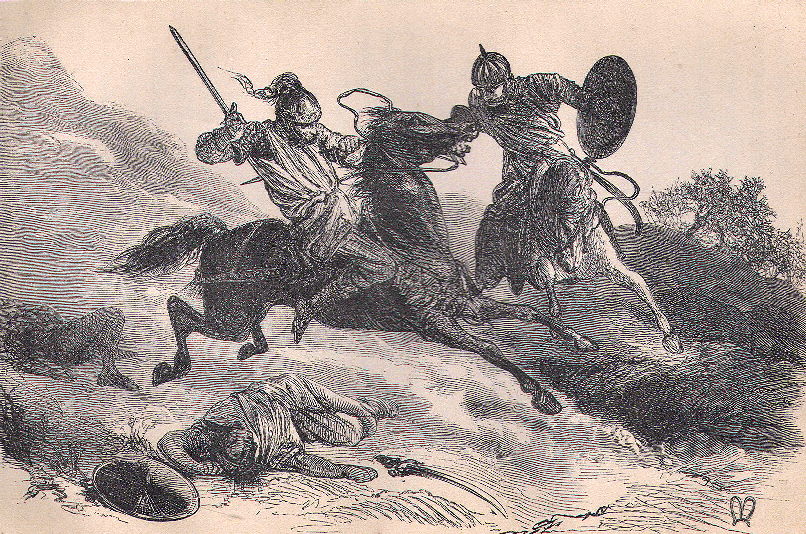While affairs went forward so triumphantly in the capital of Granada, they excited general discontent in other parts of that kingdom, especially the wild regions of the Alpujarras. This range of maritime Alps, which stretches to the distance of seventeen leagues in a southeasterly direction from the Moorish capital, sending out its sierras like so many broad arms towards the Mediterranean, was thickly sprinkled with Moorish villages, cresting the bald summits of the mountains, or checkering the slopes and valleys which lay between them. Its simple inhabitants, locked up within the lonely recesses of their hills, and accustomed to a life of penury and toil, had escaped the corruptions, as well as refinements, of civilization. In ancient times they had afforded a hardy militia for the princes of Granada; and they now exhibited an unshaken attachment to their ancient institutions and religion, which had been somewhat effaced in the great cities by more intimate intercourse with the Europeans.[1]
 These warlike mountaineers beheld with gathering resentment the faithless conduct pursued towards their countrymen, which they had good reason to fear would soon be extended to themselves; and their fiery passions were inflamed to an ungovernable height by the public apostasy of Granada. They at length resolved to anticipate any similar attempt on themselves by a general insurrection. They accordingly seized on the fortresses and strong passes throughout the country, and began as usual with forays into the lands of the Christians.
These warlike mountaineers beheld with gathering resentment the faithless conduct pursued towards their countrymen, which they had good reason to fear would soon be extended to themselves; and their fiery passions were inflamed to an ungovernable height by the public apostasy of Granada. They at length resolved to anticipate any similar attempt on themselves by a general insurrection. They accordingly seized on the fortresses and strong passes throughout the country, and began as usual with forays into the lands of the Christians.
These bold acts excited much alarm in the capital, and the count of Tendilla took vigorous measures for quenching the rebellion in its birth. Gonsalvo de Cordova, his early pupil, but who might now well be his master in the art of war, was at that time residing in Granada; and Tendilla availed himself of his assistance to enforce a hasty muster of levies and march at once against the enemy.
His first movement was against Huejar, a fortified town situated in one of the eastern ranges of the Alpujarras, whose inhabitants had taken the lead in the insurrection. The enterprise was attended with more difficulty than was expected. [The Moors]…had ploughed up the lands in the neighborhood; and, as the light cavalry of the Spaniards was working its way through the deep furrows, the Moors opened the canals which intersected the fields, and in a moment the horses were floundering up to their girths in the mire and water. Thus embarrassed in their progress, the Spaniards presented a fatal mark to the Moorish missiles, which rained on them with pitiless fury; and it was not without great efforts and considerable loss that they gained a firm landing on the opposite side. Undismayed, however, they then charged the enemy with such vivacity as compelled him to give way and take refuge within the defenses of the town.
No impediment could now check the ardor of the assailants. They threw themselves from their horses, and bringing forward the scaling ladders, planted them against the walls. Gonsalvo was the first to gain the summit; and, as a powerful Moor endeavored to thrust him from the topmost round of the ladder, he grasped the battlements firmly with his left hand and dealt the infidel such a blow with the sword in his right as brought him headlong to the ground. He then leapt into the place, and was speedily followed by his troops. The enemy made a brief and ineffectual resistance.
William H. Prescott, History of the Reign of Ferdinand and Isabella the Catholic (Philadelphia: J. B. Lippincott Company, 1900), pp. 133-135.
Short Stories on Honor, Chivalry, and the World of Nobility—no. 164








